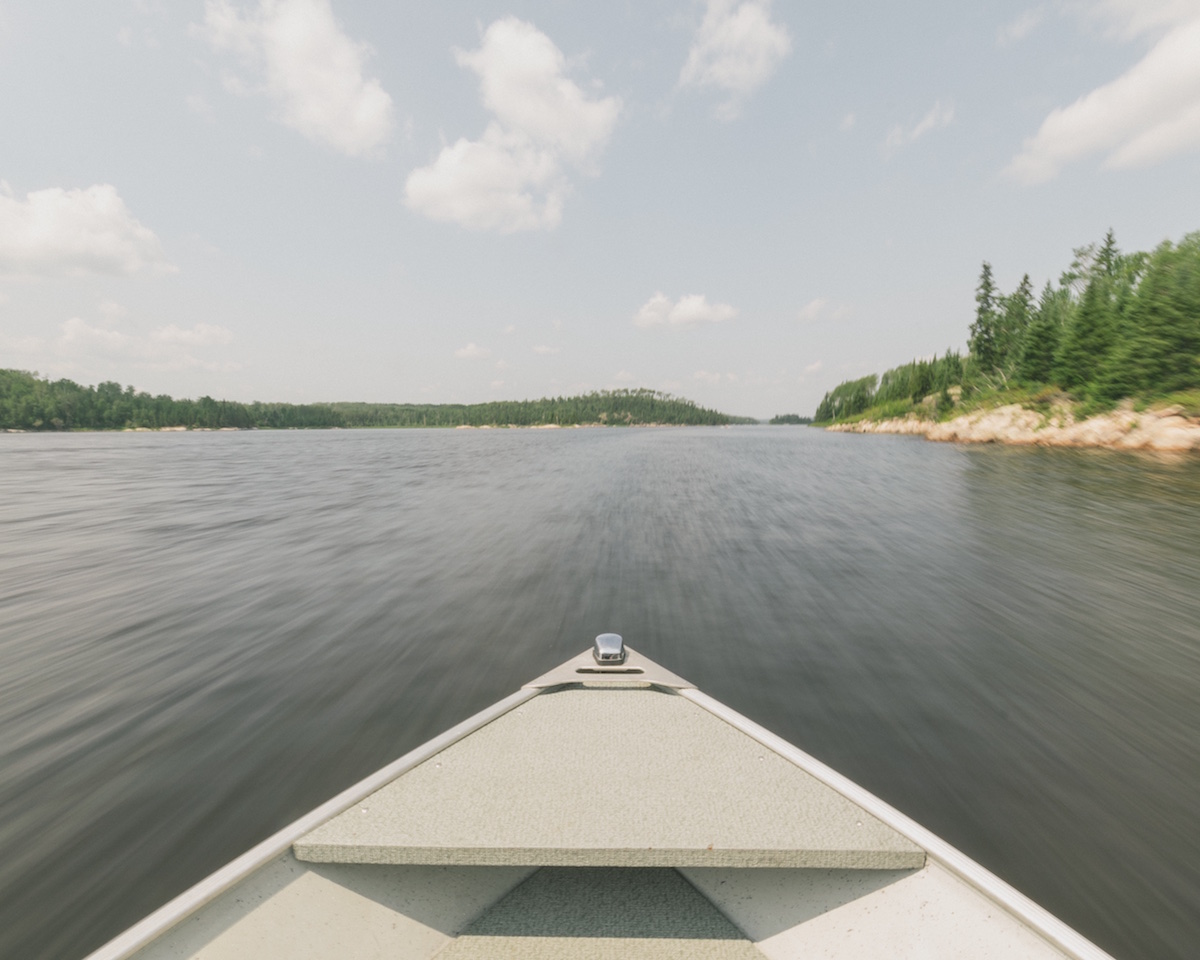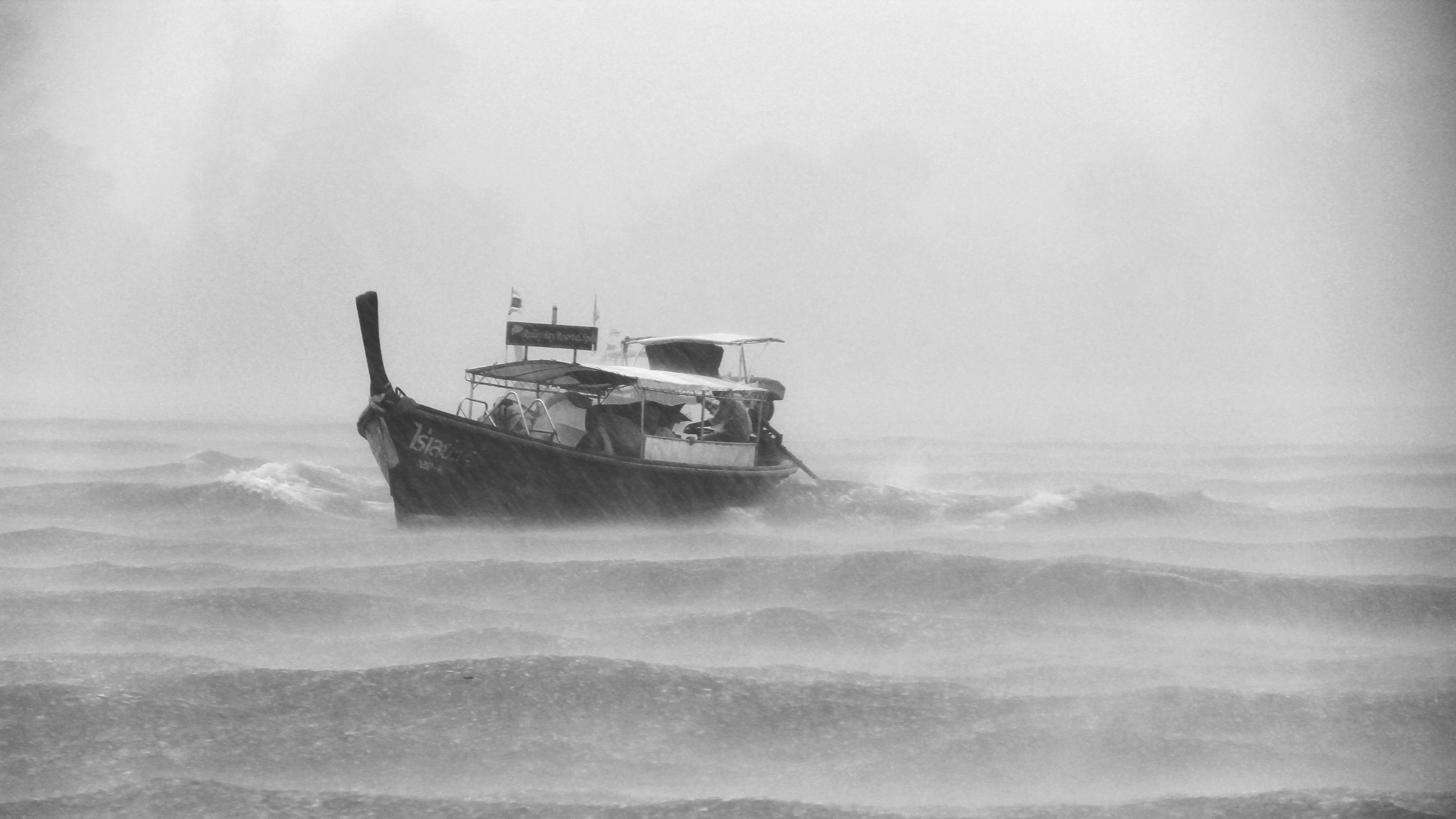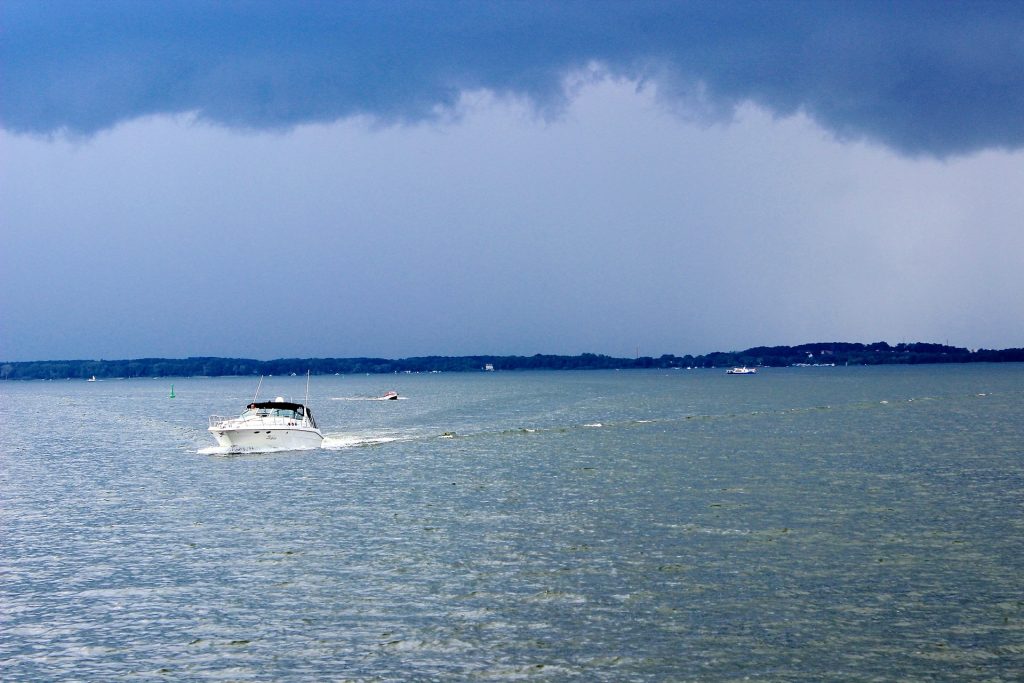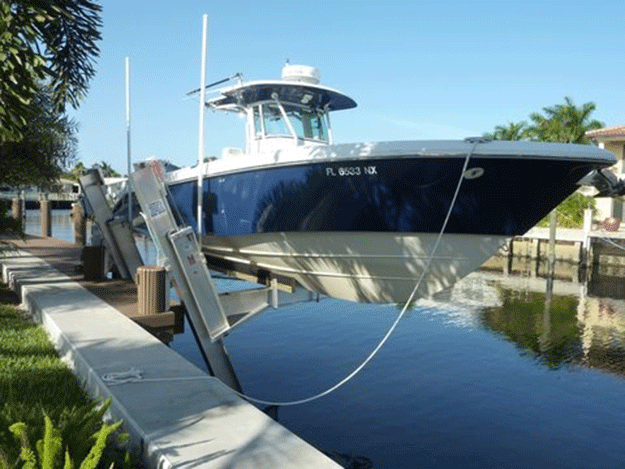
If there’s a body of water, chances are there will be a boating enthusiast just itching to get out on it. From the vast and often unpredictable waters of the open ocean to placid lakes and rushing rivers, there are plenty of uniquely interesting ways to hit the water. However, before a frequent river cruiser decides to hit the Atlantic for the first time or a deep sea fisherman tries his luck in a lake, it’s important to identify a few important differentiators and uncover some helpful boating tips specific to each body of water.
On the Ocean
There is nothing quite like the open ocean. From crashing waves to the unmistakable scent of saltwater in the air, this kind of boating can be truly invigorating, exciting and relaxing if the weather plays along. Unlike boating on freshwater, unless in the extreme cold, oceans do not freeze over in winter months. However, dangers like massive waves, tidal changes and the isolation of the open ocean must be considered before taking it on. Always ensure you have the adequate emergency equipment, including locator beacons and PFDs. Unlike smaller lakes and rivers, if you are forced to abandon ship in the ocean, you often can’t simply swim to shore.
On a Lake
Lakes are often placid and more predictable than the open ocean, especially smaller lakes. As another benefit, freshwater is far less corrosive and damaging to your vessel and its engine components. However, due to the limited size of most lakes, they can become a bit crowded in the spring and summer, while freezing over in winter months. Just make sure your boat isn’t at risk of running aground, as some lakes are more shallow than you may anticipate.
On a River
Rivers are essentially boating roadways, allowing travel through various regions of the U.S. with beautiful sights and sounds all around you. Rivers are also frequently used for water sports. The downside? Unless you’re going downstream, you may need a powerful motor to fight against the potentially strong current. Another concern is the depth of the river. Many rivers are quite shallow, so your mega yacht may not make it far. Like lakes, rivers also may freeze over in colder months. Smaller, flat-bottomed vessels equipped for shallower waters are recommended here.
Regardless of your preference, boating, fishing and simply spending a day on the water is what it’s all about to us. Oceans are vast and unpredictable, lakes are smaller but more placid, and rivers are shallow but often scenic. Take your pick, but always remember to do your research and, as always, keep safety your priority when hitting the water.
Information Cited: https://www.getmyboat.com/resources/tips-for-renters/468/boating-on-rivers-lakes-and-oceans

The fall is a time of changing leaves, cooler temperatures and the inevitable week or so of sugar-fuelled delirium that most parents have come to anticipate after an evening of trick-or-treating. Though some would not consider boating with this season of change, for many, boating season doesn’t end just because summer has come and gone. For those of your curious about boating this fall, as well as those of you who continue enjoying fall boating, we’ve compiled a quick list of tips to make sure your boat stays shipshape.
How to Prep for Fall Boating
- Temp and Time: Two things to immediately consider before getting in some fall boating is the temperature change and the waning amount of sunlit hours we can enjoy. As Boating.com suggests, always dress for the water temperature, not the air temperature. Even in waters up to 60ºF can pose risks if you are left stranded for a prolonged period. Wear a waterproof outer layer with multiple water-resistant layers beneath it for best results.
With fewer hours of sunlight, also be sure to check all lights on your vessel and bring a waterproof flashlight with you, even if you don’t anticipate being caught after sundown. Dusk has a tendency of sneaking up on you when boating in the fall.
- Life Jackets Save Lives: Though a safety tip for all seasons, considering the above-mentioned risks of cooler waters make life jackets all the more vital if you fall overboard. Ensure that your life jackets are still in good shape and fit comfortably over your bulkier fall clothing.
Also consider utilizing the likes of personal life beacons (PLB) and emergency position indicating radio beacon (EPIRB), as cell phones can easily become wet and unusable in emergency situations.
- Check, Please: If you had a relatively quiet summer and didn’t take to the water very often, it may be time to run through your commissioning checklist. Though traditionally conducted in the spring, you can easily create an amended version for your fall boating needs, including such essentials as hull assessments, corrosion checks and paperwork reviews.
Though our HQ in the Sunshine State often doesn’t have to worry about cooler weather until we are well into winter, our friends in Virginia and throughout the North can surely use these tips when preparing for some fall boating fun. Always remember, check your vessel before hitting the water, utilize important safety equipment and be prepared for cooler temperatures and shorter days. Stay safe and enjoy the cooler weather while on the water.

You’ve picked up those pesky groceries you’ve been avoiding getting all week and stroll out of the store to an unwelcome surprise. The sky darkens and, seemingly instantaneously, the rain pours on you, your whole wheat bread and farm-fresh eggs. Being caught in a storm is never fun, but transfer this inconvenience to the open water and amplify the danger caused by heavy rains, high winds and intense lightning.
How Can I Handle Being Caught in a Storm?
- What should I do first if I’m caught in a storm? Remain calm and focus on getting life jackets secured on all passengers and securing your deck by closing all watertight compartments, shutting doors and windows to avoid your ship taking on water. It’s also a smart idea to check your coordinates to assess whether your ship is in danger of running ashore, as well as figure out how best to navigate to safety or, in worst case, know where to report an emergency.
- What should I tell my passengers to do to remain safe on my boat? Get your passengers to either sit low in the boat or remain below deck to avoid the winds and waves knocking them overboard.
- How should I drive my boat in a storm? Your instincts may tell you to jet out of the rough weather as fast as possible, but this is extremely dangerous. Experts recommend slowing to the speed of the sea itself in order to avoid loss of control.
- What do I do if my engine dies after being caught in a storm? If you cannot make it safely to shore and your engine dies, anchor your ship, turn on your lights, secure all emergency safety devices and be ready to radio the coast guard to signal for help if conditions worsen.
If caught in a storm, never panic. Keeping a clear head and relying on training and preparation can save your ship — and maybe even your neck. Do a bit of preparation and always keep a close eye on the weather whenever you hit the water. If you’re concerned about keeping your ship safe when it’s docked, Hi-Tide Boat Lifts can prevent the damage caused by getting caught under or hitting the docks. As always, stay safe and have a fun (hopefully sunny) time on your next boating adventure.

If you are like many boaters (ourselves included), you let very little come between you and a day on the water. Unfortunately, a bout of bad weather can throw a monkey wrench into your plans for a relaxing boating trip. Especially in the summer months, weather can change on a dime.
How to Spot Bad Weather While Boating
- Did I check the forecast? It may seem redundant, but always check the forecast just before embarking on your trip — yes, even if you checked it just the night before. As we all know, meteorology can be a bit of a hit and miss science, and forecasts can change, well, with the weather.
- Can I predict bad weather by looking at clouds? An easy way to get a gauge on the weather is to see if the clouds are flat, puffy, or tall and dark. In general, it’s the taller clouds that can lead to dangerous winds, rain and lightning.
- Where can I listen to weather reports while on the water? Keep tuned to Coast Guard and NOAA Weather Radio All Hazards stations for regular broadcast updates.
- What boating apps can I download to monitor the bad weather? There is a multitude of options when it comes to monitoring the weather on your smartphone. Some popular apps include NOAA SuperRes Radar HD, Skipper, and Boat Weather. There are many free and paid premium choices, so shop around to find the perfect app for your specific needs.
As we often say here at Hi-Tide Boat Lifts, preparation is the key to safety. Always keep the necessary safety gear aboard, complete regular commissioning checklists and continually monitor the forecast before and during your trip for signs of bad weather on the horizon. Though boating is great fun, if there’s even the possibility of bad weather rolling in, it may be better to err on the side of safety and hit the water when you, your passengers and vessels are in the clear.

So, you’ve finally decided on buying a boat lift. What now? As a boat owner, you know that there are wide varieties of vessel shapes, sizes and styles. From dinghies to superyachts, there is absolutely no lack of diversity when it comes to vessels on the market. Though this is a plus for everyone looking for a boat that’s just the right fit for their needs and budget constraints, this also poses issues when buying a boat lift. Will the lift fit your boat and your needs? Answer these simple questions and you can buy a boat lift that works for you.
3 Questions to Answer When Buying a Boat Lift
- How big is my boat?: Knowing the weight and dimensions of your vessel is an obvious but essential step to buying a boat lift that will operate safely for your vessel. Heavier boats often require stronger lifts, just as larger boats must be accommodated by larger lift platforms. Need help in finding the dimensions of your boat? Check out NADAguides to look up your model.
- What is my vessel’s bottom shape?: From displaced catamarans to flat bottoms, understanding your boat’s bottom shape (hull) is vital for preventing damage while assuring proper safety from the risk of your vessel tipping over due to balance issues while it’s on the lift. You would never try to put a square peg into a round hole; why try to put a catamaran on a boat lift meant for a flat-bottomed boat?
- What fits my dock?: Much like the variety of needs experienced in boats themselves, the dock or marina in which you store your boat may have some unique needs. Always check with your marina to ensure that the boat lift you want to purchase fits and is allowed before putting your money down.
A bonus question to ask yourself: Why not consult an expert? Hi-Tide Boat Lifts is a leader in the industry, outfitting lifts for PWC’s to yachts, and everything in between. Simply give one of our experts a ring at 1-800-544-0735 or fill out our quick Lift Finder questionnaire. Though finding the right boat can be a struggle, finding the right lift is as easy as answering a few quick questions and asking an expert that you trust.






